No mid-size company plans to operate with a messy, redundant, and insecure software environment. It usually happens slowly: a manager buys a tool to solve an urgent problem, another team subscribes to a different platform to meet a similar need, and finance, operations and HR each adopt their own systems. Over time, the organization ends up with a patchwork of applications that overlap, fail to integrate and create security gaps.
On the surface everything may appear to work, but unmanaged software quietly erodes profitability, productivity and security. These hidden costs are more dangerous than most executives realize.
Redundant tools are a silent budget killer
Redundancy is one of the most common and expensive problems. Marketing may be paying for two email automation platforms, operations juggling multiple project trackers, and departments unknowingly subscribing to similar apps.
Individually these purchases look trivial — $50 per user here, $200 per month there — but across a company with hundreds of employees, they add up quickly. Many organizations waste tens or even hundreds of thousands of dollars yearly on overlapping software they don’t need.
The cost goes beyond subscription fees. Redundancy creates hidden expenses like:
– Training inefficiencies: employees spend time learning multiple tools instead of becoming proficient in one.
– Increased support load: IT spends time maintaining and troubleshooting overlapping platforms.
– Weakened purchasing leverage: fragmented licensing reduces negotiating power with vendors.
Much of this waste remains invisible, buried in departmental budgets. Unless you audit software usage, you won’t see how much money is leaking away.
Productivity drains through friction
The average employee switches between many apps daily. Every switch, manual data entry, and inconsistent interface chips away at productivity.
In environments without governance, staff invent workarounds: sales may enter customer data into three systems, finance reconciles reports manually from different sources, operations track projects across disconnected tools. Those small inefficiencies multiply. If 150 employees each lose 30 minutes per week to app friction, that’s almost 4,000 lost hours per year.
Beyond lost time, this friction damages morale and customer experience. Employees grow frustrated when systems don’t communicate; customers suffer from slower responses, errors or inconsistent service.
Every app increases cyber risk
Each new application is another potential entry point for attackers. When tools are adopted without IT oversight, risk compounds rapidly.
Typical problems include:
– Unpatched or outdated software with known vulnerabilities
– Shadow IT, where employees sign up for services bypassing security controls
– Orphaned accounts and access left active after people leave
– Sensitive data dispersed into unsecured repositories or exports
For companies subject to regulations like CMMC or HIPAA, unmanaged software is a real liability. One overlooked application can expose sensitive data, trigger fines or cost contracts. Cybercriminals target mid-size companies expecting weaker controls; an unmanaged app ecosystem makes that expectation a reality.
The invisibility problem
The most dangerous aspect is that the true cost of software sprawl is often invisible to leadership. Executives see license line items but not lost productivity, fractured data or growing risk. CFOs may believe IT spend is contained while real dollars are tied up in redundant subscriptions. CEOs hear complaints about “systems not working” but rarely see redundant tools as the root cause.
When organizations finally audit their software estate, the results commonly surprise leaders: dozens of unused or duplicate apps, overlapping systems performing the same job, and a significant portion of IT spend delivering little to no ROI.
Growth magnifies the damage
A messy software environment might be tolerable at 50 employees, but by 150–250 it becomes chaotic. Integrations fail, processes break, and IT shifts from strategy to firefighting. Growth doesn’t fix sprawl — it amplifies it. Companies that ignore application chaos often face disruptive, expensive cleanups precisely when they need to scale smoothly.
Cytranet’s approach: turn chaos into clarity
Large enterprises have CIOs and budgets; startups often have simple, modern stacks. Mid-size companies fall between: they rarely have full-time CIO leadership and can’t absorb enterprise-level inefficiencies.
If your software landscape feels chaotic, you’re likely paying more than you know in dollars, time and risk. Cytranet helps mid-size organizations regain control. Our Fractional CIOs and governance frameworks clarify usage, consolidate redundant tools, shore up security, and align technology with business goals so you reduce costs, improve productivity and scale with confidence.
Request a consultation to see where your software spend and risk are hiding, and read our next blog on why mid-size companies can’t afford to leave software to chance.


